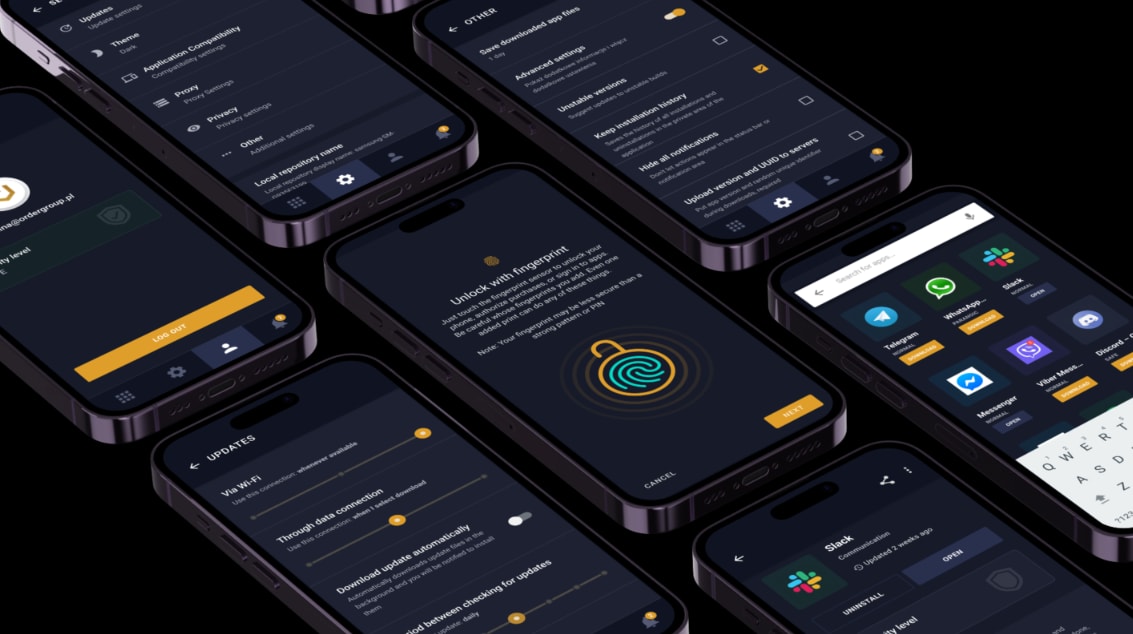If you’re designing mobile apps today, you’re designing for a generation that doesn’t remember a world without smartphones. Gen Z grew up on social feeds and mobile-first experiences. Millennials watched that shift happen in real time. Both generations are mobile-native, but how they interact with technology—and what they expect from it—differs in ways that directly shape product design.
Millennials value functional utility. They want apps that help them get things done with minimal friction. They appreciate clarity, predictability, and intuitive layouts.
Gen Z, on the other hand, expects immersion. They gravitate toward bold visuals, fluid animations, and experiences that feel personalized and expressive. For them, design isn’t just about usability—it’s about identity.
You can’t design well for these users unless you respect these behavioral distinctions.
What Younger Users Expect from Mobile Apps
Performance is non-negotiable. If your app doesn’t load quickly, they’re gone. But it goes deeper than speed. These users expect:
Effortless navigation: If you need a tutorial, your design has failed.
Clarity without blandness: Stripped-back UI is fine, but visual flatness without purpose is a turnoff.
Immediate value: They shouldn’t have to dig through four menus to see why your app matters.
Personalized experiences: Gen Z especially wants content that adapts quickly to their behavior, not just their profile data.
Design for attention-deficit contexts. These users aren’t sitting quietly in a room studying your UI. They’re multitasking, commuting, swiping mid-scroll.
How Design Preferences Differ Across Generations
Think of this as a split in cognitive preference.
Gen Z likes apps that feel dynamic and emotional. They enjoy gesture-heavy navigation, ephemeral content, and reactive visuals. Snapchat, TikTok, and BeReal reflect this demand.
Millennials lean toward structured UX with high functional value. Productivity apps like Notion or Google Keep work for them because the focus is task-driven.
The smartest apps today build for both by allowing customization. Give users layout or theme options. Let them shape their experience without needing to understand design systems.
UX Lessons from Mobile Games
Mobile games are perhaps the best source of UX innovation for Gen Z-focused apps.
They:
- Onboard in seconds without explanation
- Use progressive disclosure (features revealed as needed)
- Motivate continued use with built-in habit loops
BR Softech’s android game development is a strong example. Games they design hook users early and reinforce engagement without interrupting flow. That’s the same psychology every app should leverage—especially when retention is the goal.
Apply the same logic:
- Reward micro-actions (progress bars, subtle animations)
- Visualize progress (profile completion, task streaks)
- Keep friction low, feedback high
Design Principles That Actually Work
Real-world usability principles tailored to younger users include:
Thumb zone optimization: Design for one-handed use, especially on larger screens.
Micro-interactions: Add subtle feedback for every action—a tap, a swipe, a transition.
Visual hierarchy: Ensure every screen has a focal point. If everything is loud, nothing is.
Time-to-value: Reduce the number of steps from install to first meaningful action.
These aren’t trends. They’re table stakes.
Building Trust Through Design
Millennials and Gen Z are highly privacy-aware. They’ve seen what happens when data is mishandled.
So:
- Ask only for permissions when absolutely necessary
- Explain why you need data, not just what you need
- Provide visual cues of security (padlocks, masked fields, verification)
Inclusion also builds trust. Representation in UI imagery, accessibility features, and ethical dark pattern avoidance matter. These users will call out design that excludes or manipulates.
Real Examples of What’s Working
Duolingo: Uses gamified repetition, streak mechanics, and tight visual feedback to keep users engaged daily.
Instagram: Offers streamlined visual creation and consumption. Gen Z uses Stories and Reels more than traditional feeds.
Spotify: Tailors UX through behavioral data. Their home feed adapts daily, making the app feel alive and relevant.
These aren’t just apps—they’re experiences that evolve with user behavior.
Avoiding Common UX Mistakes
- Being performative: Gen Z can tell when design tries too hard to be “cool.” Authenticity matters more than aesthetics.
- Overloading onboarding: Introduce features progressively. Don’t front-load the experience with clutter.
- Ignoring failure states: Empty screens, error messages, and dead-ends are critical UX moments that most apps neglect.
- Designing for perfection: Assume users are on bad connections, cracked screens, or moving. Design for reality, not ideal scenarios.
Actionable Tips to Improve UX for Younger Audiences
- Replace static welcome screens with live previews or mini-demo flows
- Let users try features before signing up (especially Gen Z)
- Use contextual nudges instead of walkthroughs
- Embed lightweight progress indicators
- Test with real users from both generations; use behavior over opinion
These quick wins show respect for your users’ time and habits—and build trust fast.
Final Thoughts: Designing With, Not Just For, the Next Generation
You don’t build products for younger users—you build them with them. The most successful apps treat UX as a living system: tested, refined, and co-created.
Design is no longer just visual. It’s emotional, behavioral, and contextual. And that’s exactly what Millennials and Gen Z expect.
Want to compete at their level? Start by understanding their world—then build experiences that feel like they belong there.


